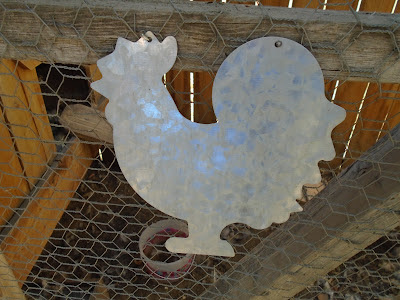This is the time of year when I get busy making sure my backyard coop and the hens are set up for the upcoming winter. I begin with a deep clean of the coop and inspection to see if anything needs to be repaired. This year I will need to add a few new treads to the ramp so they can safely and easily enter and leave the coop.
I use the deep litter method, and have for years, meaning I only clean the coop twice a year. By filling the base of the coop with a deep layer of pine shavings it controls the moisture in the coop reducing the humidity and keeping the inside of the coop dry and odor free year round. Moisture is what causes a coop to smell and it also makes it difficult for your chickens to stay warm in the wintertime. The deep litter method allows my girls to stay dry and warm.
The coop itself is made of cedar so it is durable and moisture resistant. The deep litter method helps to make sure it stays that way and stave off any possible rot from too much moisture. I will check for any loose boards or screws and make sure it is in good working order so my hens are not only well housed, but also secure from predators. I also double check the pen area and make sure all of the chicken wire is secure and check the perimeter to make sure there are no areas skunks or raccoons can dig and burrow inside.
Feeders are also checked for wear and tear and replaced if necessary. I do clean them at various times throughout the year. For my flock I find that a simple one gallon ice cream bucket works well for their water and in the winter time I rotate two of them during freezing temperatures. I can bring a frozen water bucket inside to thaw overnight while I set out a fresh one each morning. During especially cold temperatures I will rotate them midday as well.
In the garage I have an area where I stock up on feed and supplies. I know how much I need to keep on hand to get through the winter and well into spring so each fall I make sure that I have those items stocked and ready. This way I am not trying to get out and get a 50# bag of feed during a snowstorm and wrestle it into the garage on a slippery driveway.
During the winter I up their feed and I also add more fats and protein to their diet so they stay warm and healthy. I make them homemade suet cakes using rendered beef or pork fat that I’ve saved from cooking in my freezer. I use a small plastic bowl as a mold and place a cup of scratch grains as well as some meal worms in it. Then pour melted fat over it and allow it to set. I personally don’t like the idea of putting meal worms into my fridge or freezer so I just set the bowls in the garage to chill. Once they’ve set I can pop them out and they are ready to serve.
We miss our Edith, but the other girls are still doing well
Also during the winter I will purposely buy extra produce so I can give leafy greens and any other vegetable scraps I may have to the girls. I also give them piles of leaves I’ve raked up and saved for them in a large trash can. It gives them something peck and scratch at, but has the added benefit of controlling mud so they are not constantly walking around with wet feet. The bonus is that in the spring I can rake out the composted material and add it to my garden beds.
That pretty much sums up how I care for my chickens and get them ready for those cold blustery days during the winter. The goal is always to make sure they are well cared for and have a good quality of life.








No comments:
Post a Comment
Your kind comments are always appreciated!
Comment modification has been turned due to spam. I will get your messages up as quickly as possible each day. Thank you for understanding and know I love hearing from you very much.